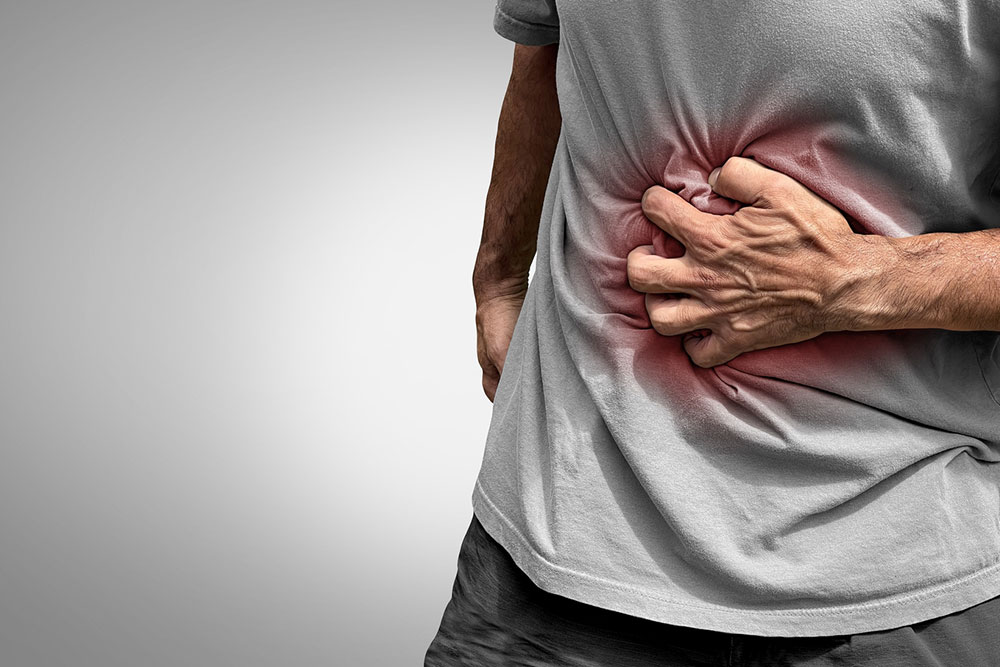
10 signs of Crohn’s disease to look out for
Crohn’s disease, a form of inflammatory bowel disease (IBD), results in inflammation and irritation of the digestive tract. This lifelong condition involves the inflammation of specific segments of the digestive system. It can affect individuals of all age groups and may become intensely painful and potentially life-threatening in certain situations. The symptoms of Crohn’s disease can differ significantly among individuals and range from moderate to severe. Below mentioned are 10 signs of Crohn’s disease:
Abdominal pain
Abdominal pain is a common symptom of inflammation in the gut. It is usually felt in the lower right part of the abdomen, but it can be experienced in other parts of the abdomen as well. The intensity of the pain varies from person to person and depends on the location of the inflammation in the gut. Pain can arise from a variety of factors, such as partial obstruction, intestinal distention, and severe inflammation of the intestines.
Fatigue
Individuals with Crohn’s disease often experience tiredness, which can be debilitating and impact their everyday lives. This tiredness can result from nutritional shortages, anemia, and various other reasons. Fatigue goes beyond just feeling tired; it can make simple tasks like climbing stairs or walking short distances physically challenging. It can happen during flare-ups or even when the disease is in remission.
Fever
A low-grade fever is a common symptom of Crohn’s disease, especially during a flare-up. Fever can develop due to intestinal inflammation, infections associated with Crohn’s, or as a side effect of prescription treatments used to treat the disease. Inflammation can cause one’s body temperature to fluctuate, leading to chills and night sweats. Notably, around 40 percent of individuals seeking medical care for IBD (Inflammatory bowel disease) symptoms experience fever as one of their initial symptoms.
Appetite loss
People with Crohn’s disease frequently experience appetite loss, making it difficult to consume enough calories. Several factors contribute to this reduced appetite. One primary reason is that eating can cause sensations like nausea, discomfort, bloating, and diarrhea, making meals less enticing and enjoyable. Additionally, some people may detect changes in their perception of taste, which may impact their desire to eat.
Problems with bowel movements
Individuals with Crohn’s experience frequent urgencies to have a bowel movement throughout the day. Furthermore, this health condition also leads to tenesmus – a feeling of incomplete defecation. Bowel obstruction is another complication associated with Crohn’s, which occurs when inflammation causes the intestine to thicken and narrow, which can partially or fully block the intestine, causing obstruction.
Joint pain
Individuals with Crohn’s disease may encounter joint pain, notably in areas like the knees, elbows, hips, and ankles. The pain may also move from one body part to another. However, this joint discomfort is typically a temporary condition and tends to improve with treatments for Crohn’s disease.
Mouth sores
Mouth sores, known as aphthous ulcers, can afflict individuals with Crohn’s disease. These ulcers are typically small, shallow, round-to-oval in shape, and cause discomfort. While occasional mouth sores are common for many, they often heal within two weeks, but in Crohn’s patients, they can persist for up to six weeks. Approximately 10% of individuals with Crohn’s experience these mouth sores. They can cause pain and problems in eating. These oral ulcers tend to coincide with flare-ups of intestinal inflammation and may resemble typical canker sores.
Fistulas
Fistulae is a significant complication in individuals with Crohn’s disease (CD). Fistulas are abnormal tunnels that can develop between organs or between an organ and the skin due to Crohn’s disease-related inflammation. They often form in the buttocks and can lead to pain, drainage, and infection.
Skin problems
Individuals with Crohn’s disease may experience skin issues such as rashes, bumps, sores, acne, canker sores on the face, and blisters or psoriasis elsewhere on the body. Additionally, weakened immunity from the disease and its treatments may make them more susceptible to skin infections.
Eye problems
In Crohn’s, inflammation doesn’t just stay confined to the digestive tract; it can affect other parts of the body, too. Up to half of those with Crohn’s may experience inflammation in their eyes or other areas, termed extra-intestinal manifestations (EIMs). Remarkably, eye inflammation is the third most common form of EIM, emphasizing the importance of addressing these non-digestive symptoms in managing Crohn’s disease.
Conclusion
In conclusion, Crohn’s disease has no cure, but medical treatments can effectively manage its symptoms and induce remission. Recognizing the early symptoms of Crohn’s and consulting a healthcare professional early on is essential for effective management. With the right treatment and self-care, many individuals can lead fulfilling lives. Collaboration with doctors is vital for coping with this condition.




